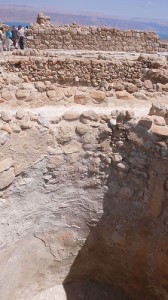 A cool wind blows through the vineyard in Yavneh late in the month of Elul. The sun, obscured by large but unthreatening gray-blue cloud, has passed the sky’s pinnacle. Rabban Yohanan Ben-Zakkai’s students, who until just a few minutes previously had been engaged in a heated debate over whether the shofar could be blown when Rosh Hashanah falls on Shabbat. This was formerly allowed only in the Holy Temple, which was destroyed some years before. Could a rule applying just to the sacred precinct now be expanded to include all of Jerusalem, or perhaps Yavneh as well, or even the entire Land of Israel?
A cool wind blows through the vineyard in Yavneh late in the month of Elul. The sun, obscured by large but unthreatening gray-blue cloud, has passed the sky’s pinnacle. Rabban Yohanan Ben-Zakkai’s students, who until just a few minutes previously had been engaged in a heated debate over whether the shofar could be blown when Rosh Hashanah falls on Shabbat. This was formerly allowed only in the Holy Temple, which was destroyed some years before. Could a rule applying just to the sacred precinct now be expanded to include all of Jerusalem, or perhaps Yavneh as well, or even the entire Land of Israel?
“We seem,” says Rabban Yohanan—the Nasi, head of the Sanhedrin, reconstituted here on the southwestern coastal plane of the Holy Land after the Temple’s destruction—“to have lost our train of thought.”
Rabbi Yosi points to the sky. “Since the destruction of the Holy Temple, a cloud often passes between us and divine inspiration.”
“Perhaps,” says Rabban Yohanan, “I should tell a story.





